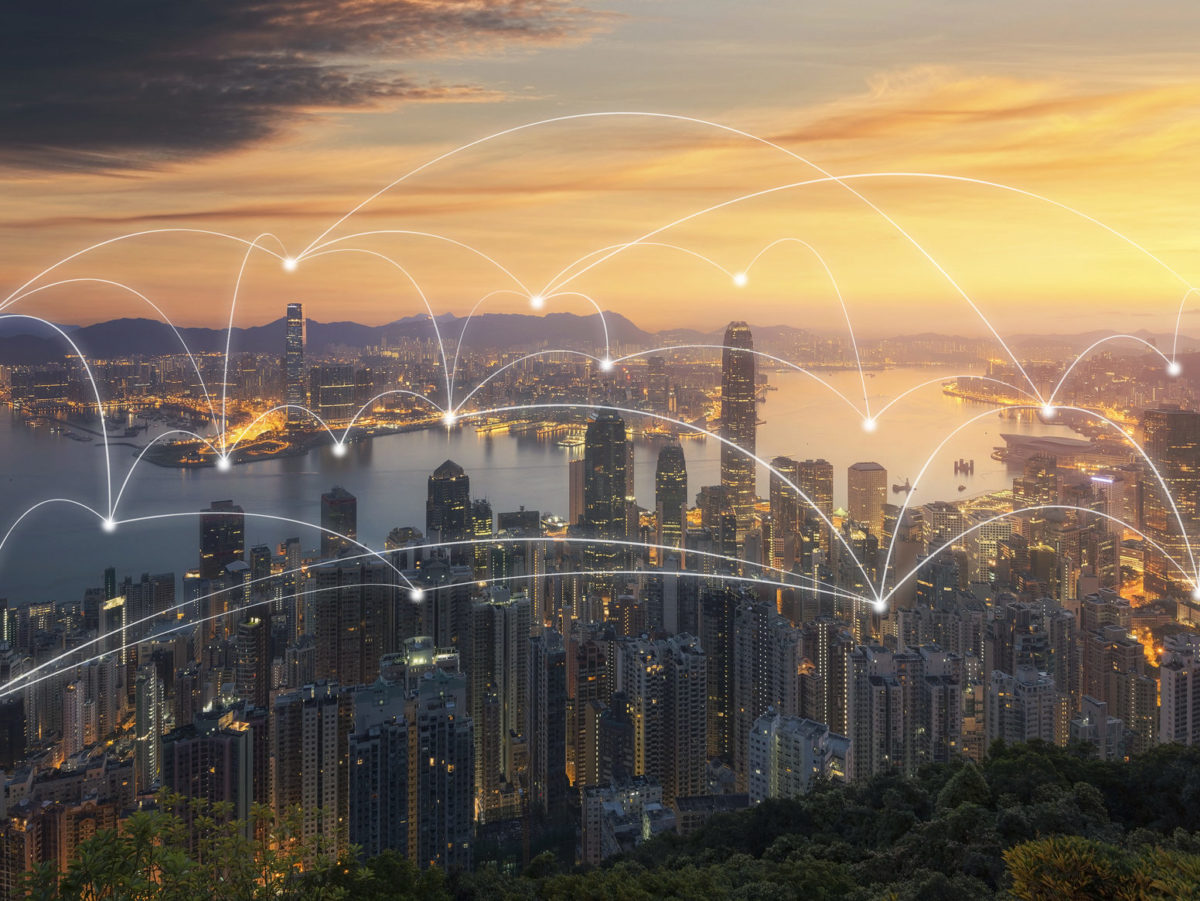
5G is not just a fatter pipe. It is a much smarter, more capable one that will transform how data is managed in the field. But utilities need to start preparing now.
I’ve written previously about how 5G wireless networks promise to provide electric utilities with multiple opportunities, not only in terms of new applications supported, but also for new revenue generation. You can read an overview in my piece “Hey, Utilities, 5G is a Thing.”
In a nutshell, the near-term vision for how utilities may benefit operationally from 5G includes low-cost sensing and IoT capabilities for widespread grid visibility, high bandwidth for video transmission, low latencies for augmented/virtual reality applications and more. But the truly interesting story comes in how analytics and, ultimately, true artificial intelligence (AI) in the grid, will be enabled by 5G networks.
It’s not Viki—yet.
I recently watched the 2004 movie adaptation of Isaac Asimov’s I, Robot. In it, the bad guy isn’t a guy at all, but rather Viki, the AI brain controlling millions of robots. Viki determines that humans don’t act in their own self-interest, and that ‘she’ must take control of society and eliminate those humans deemed dangerous. Fortunately, Will Smith stops Viki before that apocalypse can unfold.
15 years later (and more than 70 years after the novel’s publication), there are still many in the scientific world who worry that moment of singularity, where the intelligence of technology outstrips that of the human race, could be disastrous.
Analytics + 5G = AI
That ongoing debate aside, AI science is truly exploding. Utilities are moving cautiously into the realm of big data analytics, exploring how solutions can improve their business operations, grid efficiency, and customer interaction.
But take the advances in analytics (and data management, cleansing, storage) to their logical conclusion, and the Navigant Energy concept of the Neural Grid platform, where the grid is intelligent, automated and self-healing, only comes about when advanced analytics and 5G networking capabilities merge.
Given the pace of 5G network deployment today, and utilities’ inherent aversion to the bleeding edge when it comes to technology, a true Neural Grid doesn’t emerge in the next decade. But, make no mistake, at some point over the next 20 or 30 years, it does.
How 5G will change the analytics game for utilities
5G networks aren’t just a fatter data pipe. In fact, 5G networks will be ‘smart’ themselves, leveraging analytics to optimize performance and enable all manner of new applications for Industry 4.0.
Analytics is in the sweet-spot, taking full advantage of 5G network characteristics such as high-bandwidth, low-latency, and edge computing. 5G’s ability to support massive connectivity across diverse devices, backed by distributed compute architectures, creates the ability to translate big data-at-rest and data-in-motion into real-time insights with actionable intelligence.
Context-aware computing—the ability of a system to gather information about its environment and adapt behaviors accordingly—will be an integral part of 5G. The network will be aware of the underlying context of its traffic flow and cognitive enough to provide smart experiences for individual subscribers (devices) on the network. This awareness will make 5G networks more reliable and responsive—and suitable for critical safety or grid management functions in real-time.
Analytics in 5G will far exceed traditional descriptive analytics with basic business intelligence reporting. Machine learning solutions with 5G will learn from context and past behavioral patterns, predict what will happen next, prescribe and potentially automate the next best action. Analytics-generated insights can increasingly drive decision making, and with the speed of 5G, more information will be collected and processed, faster than ever before, leading to cognitive intelligence—aka AI.
5G will also support mission-critical edge analytics, making it possible to not just sense and analyze at the edge, but to trigger actuators for response actions within milliseconds. Data will travel seamlessly between the cloud and a plethora of endpoints.
AI and 5G will leverage multiple forms of data as well. The ability to integrate images, diagrams, facial recognition and more will deepen the cognitive capabilities of the system. In short, the system will respond as well—or better than—a highly trained human.
Of note, many utilities today are considering deployment of private 4G LTE networks. 5G technology represents an evolution to 4G. Investment in 4G today can lead to a private 5G network tomorrow—dependence upon public carriers is not requisite.
Hurdles—not roadblocks—remain in the way
Before the promise of AI with 5G can be fully realized, utilities must understand the complexities and challenges that these technologies will create. For the Neural Grid to be realized, the time to prepare is now.
Even for today’s relatively straightforward analytics applications, utilities struggle with data quality. Utility data is typically stored in multiple formats, in multiple silos, and is often inaccurate or incomplete. In the mechanical era, this was acceptable. In the AI era, such disfunction could paralyze a utility’s operations. Long-term plans for data collection, cleansing, storage, and accessibility must be made today. The cloud must be a part of that strategy.
Furthermore, with the amount of data growing by orders of magnitude over the coming decades, end to end security becomes paramount. The 5G standards address security, but utility stakeholders must remain vigilant. In coming years, that data may very well represent as much or even more value than the utility’s physical assets.
Embrace singularity
In a limited network with limited capabilities, data analytics has limited value. A utility can only act on the amount of data that can be carried by the network. As connectivity and analytics solutions mature, the time when the grid becomes a truly self-aware, self-healing, self-optimizing machine is visible on the horizon.
AI, powered by 5G networks, promises to transform the operating practices of all industry. Utilities must prepare now to ensure they can capitalize on the opportunities while avoiding the pitfalls.
The good news? You probably don’t have to worry about Viki—yet.
Richelle Elberg is a principal research analyst overseeing Navigant Research’s Digital Energy program and heading up the Energy Connectivity research service. Her primary focus is on holistic connectivity strategies for energy industry stakeholders in the Industry 4.0 era, including networking for applications in the power utility, oil and gas, and mining sectors. Elberg has more than 25 years of experience analyzing telecommunications and technological evolution, including an extensive background creating market and financial models and performing strategic consulting engagements and business valuations for service providers and technology vendors. She is a recognized expert in both wired and wireless technologies, including fiber network deployment and public and private wireless solutions such as unlicensed solutions, low power wide area, and 5G technologies.













